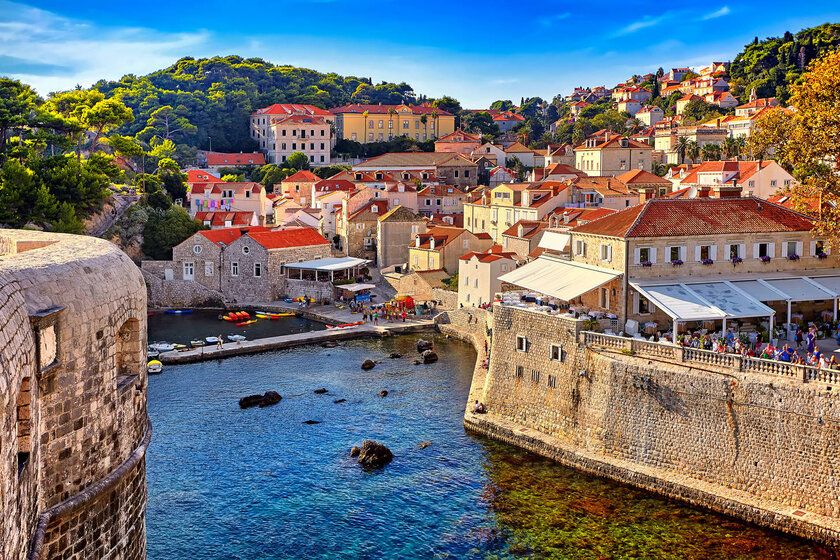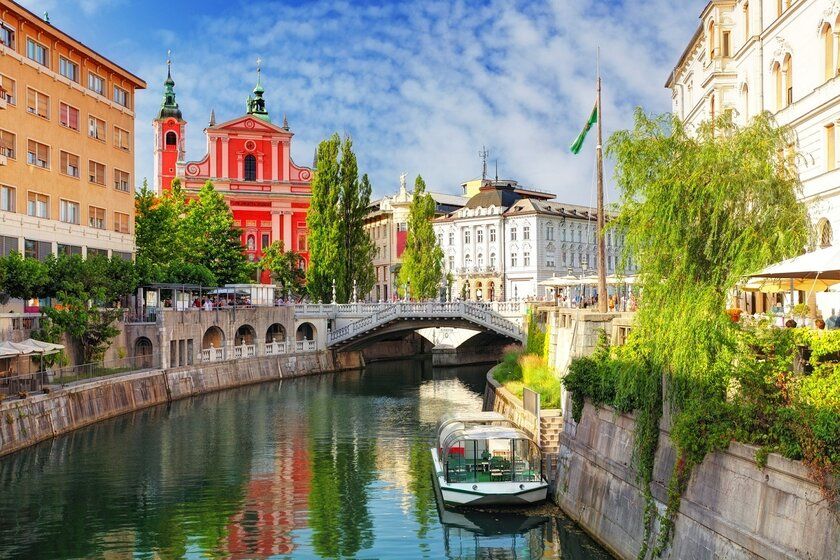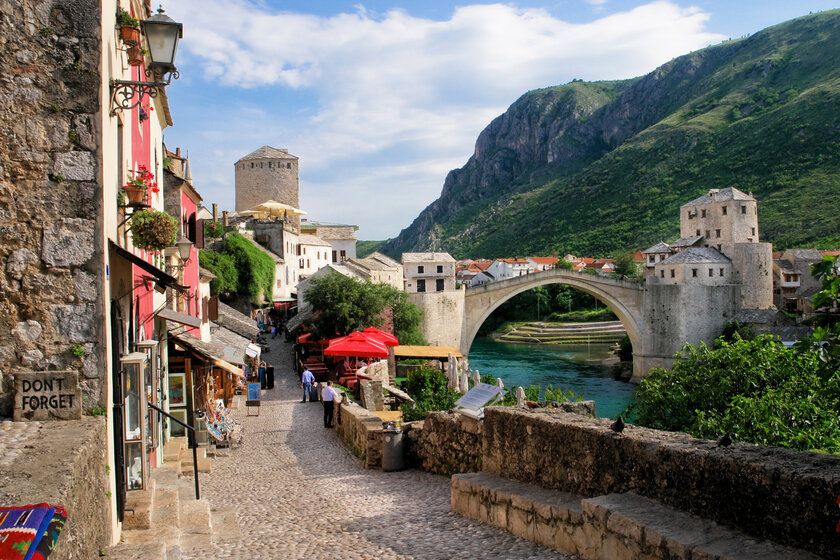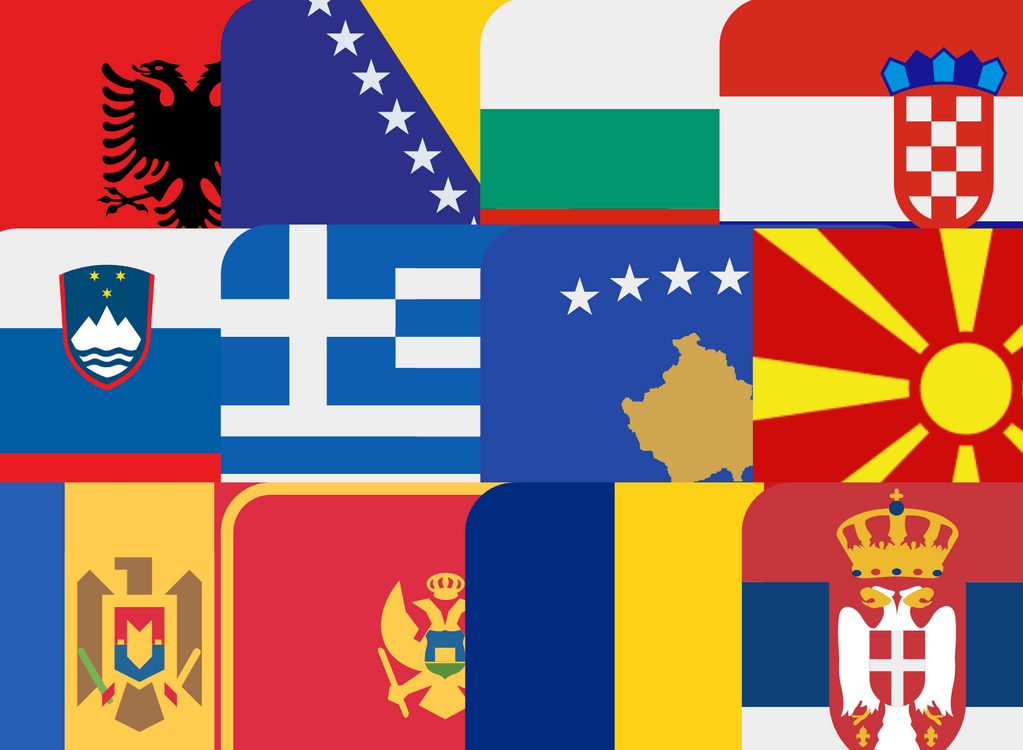The Balkans, a region located in southeastern Europe, is a treasure trove of cultural diversity, ancient history, and breathtaking landscapes.
Comprising countries such as Albania, Bosnia and Herzegovina, Croatia, Montenegro, North Macedonia, Serbia, and Slovenia, the Balkans offer a unique blend of tradition, art, architecture, and cuisine that is waiting to be explored by the intrepid traveler.
From bustling capital cities to charming coastal towns, here are ten must-visit cities in the Balkans for an enriching cultural adventure.

Dubrovnik, Croatia
Dubrovnik, often referred to as the “Pearl of the Adriatic,” is a city that exudes charm and beauty at every corner. Enclosed by medieval walls and overlooking the shimmering Adriatic Sea, Dubrovnik’s Old Town is a UNESCO World Heritage site and a living testament to its rich history. Stroll along the cobbled streets, visit the Rector’s Palace, and walk the city walls for stunning views. Don’t miss a cable car ride to Mount Srd for breathtaking panoramas of the city and the sea.
Sarajevo, Bosnia and Herzegovina
Sarajevo, the capital of Bosnia and Herzegovina, is a city with a tumultuous past that has emerged as a symbol of resilience and multiculturalism. Discover the city’s history through visits to the Tunnel of Hope, the Latin Bridge, and the Sarajevo War Tunnel Museum. Delight your taste buds with traditional Bosnian dishes like cevapi and burek in the lively Baščaršija district. Engage in conversations with the warm and welcoming locals to truly grasp the city’s spirit.
Belgrade, Serbia
Belgrade, the capital of Serbia, is a dynamic city with a vibrant nightlife and a fascinating fusion of architectural styles. Wander through the Kalemegdan Fortress, which offers stunning views of the confluence of the Sava and Danube rivers. Experience the bohemian atmosphere of Skadarlija, Belgrade’s historic Bohemian Quarter, where live music and delicious Serbian cuisine reign supreme.
Ohrid, North Macedonia
The city of Ohrid, situated on the shores of Lake Ohrid, is a UNESCO World Heritage site known for its cultural and historical significance. Admire the medieval churches, such as the Church of St. John at Kaneo and the Church of St. Sophia, both adorned with stunning frescoes. Take a boat trip on Lake Ohrid to explore the surrounding natural beauty, and indulge in the delectable local cuisine at lakeside restaurants.

Ljubljana, Slovenia
Ljubljana, the charming capital of Slovenia, is a city that boasts a pedestrian-friendly city center adorned with colorful Baroque buildings and a majestic castle perched on a hilltop. Stroll along the picturesque Ljubljanica River, cross the iconic Triple Bridge, and visit the vibrant Central Market to sample local delicacies. Take a day trip to the enchanting Lake Bled and marvel at its fairy-tale island with a church in the middle.
Split, Croatia
Split, Croatia’s second-largest city, is an enticing blend of ancient history and modern vitality. The Diocletian’s Palace, a UNESCO World Heritage site, stands at the heart of the city and is an impressive example of Roman architecture. Explore the narrow streets filled with shops, restaurants, and hidden gems within the palace walls. Don’t miss the opportunity to take a ferry from Split to the beautiful nearby islands of Hvar, Brac, and Vis.
Prizren, Kosovo
Prizren, a lesser-known gem in the Balkans, lies in the southern part of Kosovo, surrounded by imposing mountains. This city is a melting pot of cultures, evident in its diverse architecture and religious monuments, including the Sinan Pasha Mosque and the Serbian Orthodox Church of Our Lady of Ljeviš. Enjoy a leisurely stroll along the Bistrica River and indulge in authentic Albanian and Turkish cuisine in local eateries.
Kotor, Montenegro
Nestled between imposing mountains and the Bay of Kotor, the fortified town of Kotor in Montenegro is a UNESCO World Heritage site with a well-preserved medieval charm. Explore the winding streets, visit St. Tryphon Cathedral, and hike up the ancient walls to reach the Castle of San Giovanni for panoramic views of the bay. Take a boat ride to the nearby picturesque islands of Our Lady of the Rocks and Sveti Đorđe for a memorable experience.
Tirana, Albania
Tirana, the vibrant capital of Albania, has undergone significant transformations in recent years and now presents a mix of historical landmarks and contemporary developments. Skanderbeg Square, named after the national hero, is the city’s central hub, surrounded by the National History Museum and the Et’hem Bey Mosque. Discover the energetic nightlife and try traditional Albanian dishes like fërgesë and byrek in local restaurants.

Mostar, Bosnia and Herzegovina
Mostar, renowned for its iconic Stari Most (Old Bridge), is a city that epitomizes the harmonious coexistence of cultures. The bridge, destroyed during the war, has been meticulously reconstructed, symbolizing unity and reconciliation. Witness traditional diving competitions from the bridge and explore the old bazaar to find local crafts and souvenirs. Treat yourself to traditional Bosnian coffee at a riverside café and immerse yourself in the city’s captivating atmosphere.
Cultural Information About Balkans Cities.
The Balkans have a storied past that has shaped the region into what it is today—a unique blend of diverse cultures and traditions. The various civilizations that have called this region home have left their mark on its cities, architecture, and way of life. For travelers seeking an authentic and immersive cultural adventure, the Balkans offer a wealth of opportunities to delve into history, art, and cuisine.
One of the most captivating aspects of the Balkans is its multiculturalism. The region has been a crossroads of civilizations for centuries, resulting in a mosaic of different cultures and religions coexisting side by side. This rich tapestry is particularly evident in cities like Sarajevo, where mosques, synagogues, Orthodox churches, and Catholic cathedrals stand harmoniously together.
The blend of Ottoman, Austro-Hungarian, and socialist architecture in cities like Belgrade and Skopje showcases the region’s complex history and the resilience of its people.
Food plays an integral role in the Balkan culture, and each city boasts a unique culinary identity. From the hearty cevapi and sarma in Bosnia and Herzegovina to the delectable seafood along the Dalmatian coast in Croatia, food enthusiasts will find themselves in a gastronomic paradise.
Exploring local markets, known as “pijacas,” allows visitors to taste fresh fruits, vegetables, and artisanal products while engaging with the friendly locals.
The Balkans are also a land of festivals and celebrations that reflect the region’s vibrant spirit. Witness the spectacular Klapa singing festivals in Croatia, where a cappella groups serenade the streets with traditional melodies. Experience the carnival-like atmosphere of “Kurban Bayram” in Albania and Kosovo, a Muslim holiday where families come together to feast and give back to their communities.
As a travel destination, the Balkans offer something for everyone. History buffs can explore ancient ruins in Serbia’s Gamzigrad or visit the archaeological site of Butrint in Albania, while nature lovers can hike through the stunning landscapes of Durmitor National Park in Montenegro. Adventure seekers can embark on thrilling river rafting experiences in Bosnia and Herzegovina’s Tara Canyon, one of Europe’s deepest canyons.
Hospitality is a defining characteristic of the Balkans. Locals take pride in sharing their cultural heritage and traditions with visitors. Engaging in conversations with locals, even with a few words in the local language, can open doors to authentic experiences that may not be found in guidebooks.
While the Balkans have made significant strides in embracing modernity, they remain deeply connected to their roots. Traditional crafts, such as rug weaving and wood carving, are still practiced, and ancient customs and rituals continue to be passed down through generations.
Safety is often a concern for travelers in lesser-known regions, but the Balkans have made remarkable progress in this regard. Tourism is a vital industry for the region, and governments have invested in infrastructure and safety measures to ensure a positive experience for visitors.
In conclusion, a cultural adventure through the Balkans is a journey through time, where the past and the present interweave to create an unforgettable experience. From the ancient walls of Dubrovnik to the diverse cityscape of Sarajevo, each city offers a unique glimpse into the region’s captivating story.
The Balkans’ warm hospitality, stunning landscapes, and rich cultural heritage make it a must-visit destination for travelers seeking an off-the-beaten-path experience filled with history and charm. So, embrace the spirit of exploration, and let the Balkans enthrall you with its magical allure.
The Balkans beckon with a plethora of cultural experiences, historical wonders, and natural beauty that is sure to leave any traveler in awe.
Each city mentioned here has its unique charm and tales to share, making a journey through this region a rich and rewarding adventure. Whether it’s the ancient walls of Dubrovnik, the resilience of Sarajevo, or the tranquil beauty of Lake Ohrid, the Balkans offer a cultural tapestry that will forever linger in the hearts of those who explore its treasures.
So pack your bags, set out on a cultural adventure, and let the Balkans weave its magic on you.
